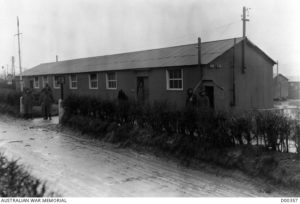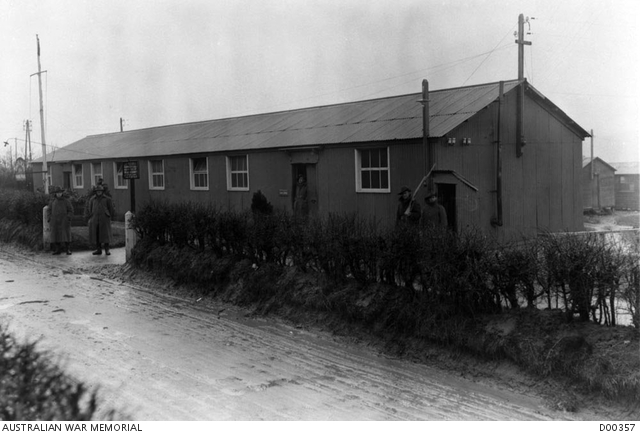In October 1916 Walter Stewart Murray appealed to the Orange Exemption Court for an exemption from military service. He explained that he was one of six sons; two brothers were already at the front and two others were under age. Walter, who farmed the family property, Fairy Burn, on Cargo Road promised he would enlist after the harvest. The court granted him a reprieve until 28 February 1917. Walter harvested his crop and enlisted on 20 January 1917, two and a half years after his older brothers George Wren Murray and Sage Clyne Sinclair Murray.
Walter proceeded to Liverpool camp for training and embarked from Sydney on 10 February. He arrived in Plymouth on 11 April and was marched in to the 1st Training Battalion at Durrington. In December 1917 he proceeded to France and was taken on strength with the 1st Battalion.
Private Murray was hospitalised twice during 1918; in March with an oedema on the eyelid, and in May he was evacuated to England suffering from trench fever. He was admitted to the 2nd Southern Hospital at Bristol for three weeks, before being transferred to the 3rd Auxiliary Hospital at Dartford for a week.
After a further two weeks’ furlough Walter was marched in to the No 4 Command Depot at Hurdcott, where he spent three months. In early October he was marched in to the Overseas Training Brigade at Longbridge Deverill, before rejoining his unit in France in early November 1918.

AIF Overseas Training Brigade headquarters, Longbridge Deverill, England, April 1919. Image courtesy Australian War Memorial.
Walter was hospitalised a third time during his overseas service: in February 1919 with influenza. On 6 July 1919 he embarked Boorara at Southampton, for return to Australia. Private Murray disembarked at Sydney on 26 August, and was discharged from the AIF on 5 October 1919.
On 8 May 1920 Walter married Harriet Hilda Ross in Parkes. The couple settled in Orange and had four children: Peggy, Phyllis, Heather and Tom.
Walter volunteered his services for the Second World War; he was stationed at Cowra Prison Camp where he held the rank of sergeant. He was on duty on 5 August 1944 during the infamous breakout.
“Pop” Murray, as he became known, moved into Orange during the 1950s, opening a general store in March Street. Walter would entertain many a shopper with his reminiscences of the war and his stories of the Cowra breakout.
In early December 1966 Walter was admitted to Orange Base Hospital, having suffered ill-health for some time. He passed away on 11 December 1966, aged 71.
Walter Stewart Murray is commemorated on the Nashdale Public School Honour Roll and St John’s Presbyterian Church Orange Honour Roll.
Walter’s brother George Wren Murray died of disease during his war service. Sage Clyne Sinclair Murray survived the war; he returned to Australia in August 1918. Many other members of the extended Murray clan in the Central West served during WWI, including Walter’s cousin, George Murray from Manildra, and second cousin, Hugh Miller Murray.

